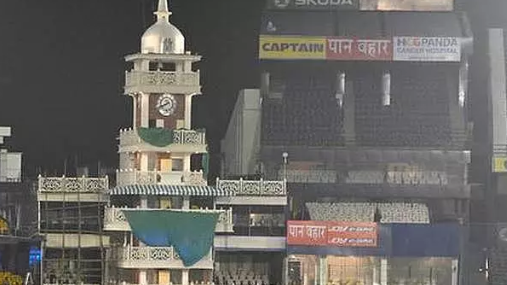

Cuttack: Nestled in the heart of Cuttack, beneath the shadow of the ancient Barabati Fort, lies a cricket ground that has witnessed over six decades of sporting history. The Barabati Stadium, Odisha's premier cricket venue, has a fascinating journey that intertwines with the region's cultural heritage.
Royal Beginnings
The land where Barabati Stadium stands today was once part of the royal gardens of the Ganga dynasty. The stadium derives its name from the nearby Barabati Fort, built in the 14th century. Before becoming a cricket stadium, the ground served as a sporting arena for various local events and was known as Barabati Field.
Birth of a Cricket Ground
The transformation into a proper cricket stadium began in the early 1950s. The Orissa Cricket Association (OCA) was formed in 1949, and soon after, work began to develop the field into a cricket ground. The stadium officially opened its doors in 1958, marking a new chapter in Odisha's sporting history.
Early Days and Development
Initially, the stadium had basic facilities with temporary wooden galleries. The first major renovation came in the late 1960s when permanent concrete structures were built. The iconic clock tower, which still stands today, was added during this period and became a distinctive feature of the ground.
The ground's first significant moment came when it hosted its maiden Ranji Trophy match in 1959. However, the watershed moment arrived when Barabati Stadium hosted its first international match - an ODI between India and Sri Lanka in January 1982.
Notable Matches and Memories
The stadium has witnessed several memorable cricket moments. One of the most significant was the India-England ODI in 1982, where Kapil Dev's all-round performance led India to a famous victory. The ground also hosted matches during the 1987 Cricket World Cup, putting it on the global cricket map.
Infrastructure and Challenges The stadium's proximity to the Mahanadi River has presented unique challenges. During the monsoons, the ground has occasionally faced flooding issues. However, this has led to the development of one of the best drainage systems among Indian cricket grounds.
Current capacity stands at approximately 45,000, making it one of the larger cricket venues in eastern India. The floodlights were installed in the late 1990s, allowing for day-night cricket matches.
Local Pride and Impact
Barabati Stadium has played a crucial role in developing cricket in Odisha. Many local cricketers who learned their cricket here went on to represent India, including Debasis Mohanty and Shiv Sundar Das. The ground has been maintained by the Orissa Cricket Association with support from the state government.
Interesting Facts and Features:
Recent Developments
In recent years, the stadium has undergone several modernization efforts. The practice facilities have been upgraded, and new player amenities have been added. The media center has been modernized to meet international broadcasting standards.
The venue continues to be Odisha's premier cricket destination, hosting domestic and international matches. Its significance extends beyond sports - it's a symbol of Cuttack's cultural heritage and sporting tradition.
As cricket evolves, Barabati Stadium continues to adapt. Plans for further modernization are in discussion, including improved spectator facilities and technological upgrades. However, efforts are being made to preserve its historic character while meeting modern cricket requirements.
The stadium remains a testament to Odisha's love for cricket and stands as a bridge between the region's rich history and its sporting future. From hosting historic matches to nurturing local talent, Barabati Stadium's contribution to Indian cricket continues to be significant.